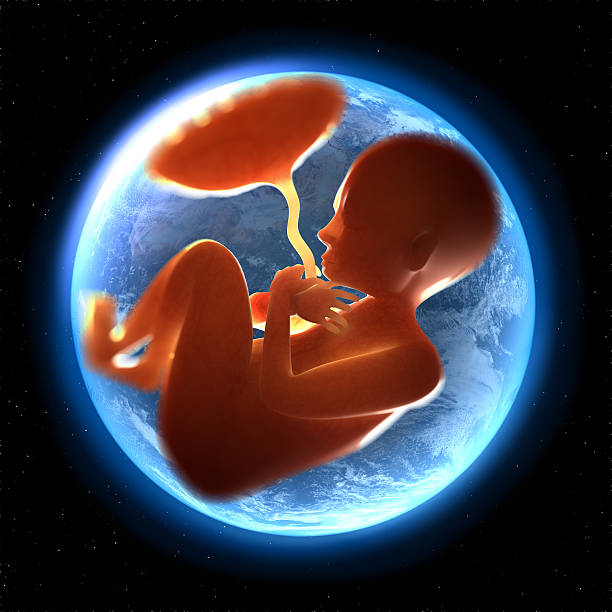Pregnancy is usually exciting and anticipating, but sometimes unexpected challenges can arise. One such challenge is called Abruptio Placenta. Let’s break down what this means in simpler terms.
What is a placenta?
The placenta is an organ that grows inside the upper part of your uterus (womb) when you are pregnant. It has many large blood vessels to carry oxygen and nutrients to your fetus (baby). The blood vessels of the umbilical cord form the umbilical cord to connect the fetus to the placenta. About 15 minutes after delivering your baby, your uterus expels the placenta, which passes through your vagina – commonly referred to as “afterbirth.”
What is abruptio placenta?
Placental abruption is a rare but serious event that can occur suddenly during pregnancy. It poses risks to both you and your baby, though thankfully, it’s uncommon.
During pregnancy, your placenta forms and develops within your uterus. It serves as a vital lifeline, delivering nutrients and oxygen from you to your baby while also eliminating waste from your baby’s bloodstream. Attached to the uterine wall, the placenta connects to your baby through the umbilical cord. However, in cases of placental abruption, the placenta detaches from the uterus prematurely, before your baby is ready for delivery.
A placenta that begins to pull away from the uterus before delivery is called placental abruption. The placenta may pull away a little or a lot. The more it stretches, the more dangerous it is for you and your baby. Placental abruption is more likely to occur after 20 weeks of pregnancy. However, If the placenta pulls away only slightly, your baby may not be growing much or may have too little amniotic fluid. If the placenta comes away completely, your baby may die.
Causes of abruptio placenta
The exact cause of placental abruption is often unknown, but certain factors can increase the risk. Avoiding these risk factors is essential to reduce the likelihood of experiencing placental abruption during pregnancy.
Risk Factors
This Includes:
- Previous Placental Abruptions: If you’ve had placental abruption in a previous pregnancy, there’s approximately a 10% chance of it recurring.
- Smoking: Studies indicate that women who smoked before pregnancy have a 40% increased risk of placental abruption for each year of smoking.
- Substance Use: Cocaine or other drug use during pregnancy significantly raises the risk of placental abruption, occurring in up to 10% of women who use cocaine in the last trimester.
- High Blood Pressure: Whether pre-existing or developed during pregnancy, high blood pressure requires careful management to mitigate the risk of placental abruption.
- Amniotic Sac Problems: Any damage to the amniotic sac, which surrounds and protects the baby in the uterus, can elevate the risk of placental abruption if it ruptures prematurely.
- Maternal Age: Women aged 35 and older, particularly those over 40, have a higher likelihood of experiencing placental abruption.
- Multiple Pregnancy: Carrying more than one baby increases the risk, especially if the delivery of the first baby triggers placental separation before the second baby is ready for birth.
- Abdominal Trauma: Accidents or injuries to the abdomen, such as falls or traffic accidents, can lead to placental abruption. Always take precautions, such as wearing a seatbelt, to minimize the risk of abdominal trauma.
While placental abruption cannot be prevented entirely, avoiding tobacco, alcohol, and drugs can help reduce the risk. It’s crucial to inform your healthcare provider if you have a history of placental abruption, as they can closely monitor your pregnancy and provide guidance on preventive measures.
Types of abruptio placenta
Healthcare providers categorize placental abruption based on the extent of detachment of the placenta from the uterine wall and the amount of vaginal bleeding:
- Partial Placental Abruption:
- In a partial abruption, the placenta does not completely detach from the uterine wall.
- Complete or Total Placental Abruption:
- A complete or total abruption occurs when the placenta fully separates from the uterine wall. This type typically presents with more noticeable vaginal bleeding.
The classification can also consider the severity of bleeding:
- Revealed Placental Abruption:
- In revealed abruptions, there is moderate to severe vaginal bleeding that is visibly apparent.
- Concealed Placental Abruption:
- Concealed abruptions involve little to no visible vaginal bleeding. Blood becomes trapped between the placenta and the uterine wall, making it difficult to detect externally.
How Common is Placental Abruption?
Placental abruption is relatively rare, occurring in approximately 1 out of every 100 pregnancies (1%).
When is Placental Abruption Most Common?
While placental abruption can occur at any point after 20 weeks of pregnancy, it is most commonly observed later in the third trimester, which spans from around 28 weeks of pregnancy until delivery (around 40 weeks).
Signs and Symptoms of abruptio placenta
Placental abruption affects approximately 1% of pregnant women and can occur anytime after 20 weeks of pregnancy, with the highest incidence in the third trimester.
When placental abruption occurs, it often happens suddenly. While vaginal bleeding may be present, it’s not always apparent, and the quantity of blood can vary. It’s essential to note that even if the bleeding seems minimal, the placental abruption could still be severe, as blood may become trapped inside the uterus.
Other signs and symptoms to watch for include:
- Pain in your abdomen or back
- Sensitivity or frequent, rapid contractions in your uterus
- Irregularities in the baby’s heart rate
Placental abruption can also occur gradually, known as “chronic abruption.” In such cases, you might experience:
- Light, intermittent vaginal bleeding
- Reduced levels of amniotic fluid
- Slower-than-normal growth of the baby
These signs and symptoms should prompt immediate medical attention to ensure the well-being of both you and your baby.
First Signs of Placental Abruption
The initial indications of a placental abruption may include:
- Vaginal Bleeding:
- Vaginal bleeding is the most common symptom of placental abruption, although it may not always occur.
- Abdominal or Back Pain:
- Sudden, persistent pain in the abdomen or back can also be a sign of placental abruption.
Sensations During Placental Abruption
During a placental abruption, you might experience:
- Sudden or Sharp Pain:
- You may feel sudden or sharp pain, along with cramping or tenderness in your lower pelvic region or back.
- Decreased Fetal Movement:
- Changes in fetal movement, such as decreased activity, may also occur. It’s essential to discuss any alterations in fetal movement with your healthcare provider promptly.
Bleeding Patterns in Placental Abruption
While bleeding is common in placental abruption, it may not always be evident. The bleeding can vary depending on the type and severity of the abruption:
- Visible Bleeding:
- In most cases, some amount of bleeding is observed during a placental abruption. However, if the abruption is concealed, the blood may be trapped behind the placenta, resulting in no visible bleeding.
- Occasional or Light Bleeding:
- In some instances, the abruption may develop slowly, leading to occasional or light bleeding.
When to see a doctor
If you experience bleeding, cramping, or pelvic pain during your pregnancy, especially in the third trimester, it’s essential to contact your healthcare provider immediately for evaluation and guidance.
Difference Between Placental Abruption and Placenta Previa
- Placenta Previa:
- Placenta previa occurs when the placenta partially or completely covers the cervix, obstructing the birth canal. It’s also referred to as a low-lying placenta. Despite its position, the placenta remains attached to the uterine wall. It obstructs the exit from the uterus but does not detach.
- Placental Abruption:
- Placental abruption involves the premature separation of the placenta from the uterine wall. Unlike placenta previa, the placenta detaches from the uterus, disrupting the connection between the mother and the baby. Both conditions can lead to vaginal bleeding during pregnancy and labor, but they arise from distinct mechanisms.
Diagnosis of Placental Abruption
If you experience vaginal bleeding or abdominal pain during pregnancy, it’s crucial to seek immediate medical attention. Your doctor will conduct a thorough physical examination, perform blood tests, and may recommend an ultrasound to assess the condition of your uterus. However, it’s important to note that ultrasounds may not always detect placental abruptions.
Treatment of Placental Abruption
Since the placenta cannot be reattached, treatment options depend on factors such as the stage of pregnancy, the severity of the abruption, and the overall health of both mother and baby.
- Less Than 34 Weeks Pregnant:
- Hospital admission for monitoring may be necessary, provided the baby’s heart rate remains normal and the abruption is not severe.
- If bleeding stops and the baby appears to be doing well, you may be discharged home.
- Steroids might be administered to accelerate lung development in case of early labor.
- More Than 34 Weeks Pregnant:
- If the abruption is not severe, vaginal delivery may still be an option.
- Severe abruptions that endanger the health of the mother or baby may necessitate an immediate C-section.
- Blood transfusion may be required in some cases.
Complications of Placental Abruption
Placental abruption can lead to various complications for both the mother and the baby.
For the Mother:
- Significant blood loss leading to shock or requiring a blood transfusion
- Blood clotting issues
- Organ failure, such as kidney failure
- Death of the mother or the baby
In cases of near or complete abruption, an emergency C-section may be necessary.
For the Baby:
- Premature birth (before 37 weeks), affecting about 10% of babies born to mothers with placental abruption
- Developmental problems, especially if born prematurely
- Stillbirth, which refers to the death of the baby in the womb after at least 20 weeks of pregnancy
Prevention of Placental Abruption
While it’s challenging to prevent placental abruption entirely, there are measures you can take to reduce your risk:
- Avoiding Smoking and Recreational Drugs:
- Refrain from smoking or using recreational drugs during pregnancy. Discuss any medication use with your healthcare provider before taking them during pregnancy.
- Maintaining Healthy Blood Pressure:
- Keep your blood pressure within a healthy range. Work with your healthcare provider to monitor and manage your blood pressure throughout pregnancy.
- Managing Chronic Health Conditions:
- Effectively manage any chronic health conditions you may have, such as diabetes or hypertension, under the guidance of your healthcare provider.
- Adhering to Health and Safety Precautions:
- Follow health and safety guidelines, such as wearing a seatbelt properly while traveling in a vehicle, to minimize the risk of abdominal trauma.
- Prompt Reporting of Symptoms:
- Report any signs of abdominal trauma or vaginal bleeding promptly to your healthcare provider. Timely communication allows for appropriate evaluation and management if necessary.
Expectations with abruptio placenta
The outcome of placental abruption can vary depending on the severity of symptoms and the stage of pregnancy. Typically, your healthcare provider will closely monitor you and your condition, frequently assessing for any changes in symptoms. It’s crucial to promptly communicate any changes or concerns with your provider for timely evaluation and management.
Survivability of Baby with abruptio placenta
The survival rate of the baby depends on two main factors: the gestational age at birth and the severity of the abruption. Early detection, vigilant monitoring, and prompt intervention can help reduce complications and improve outcomes. In cases of severe abruption, there’s approximately a 15% chance of fetal death.
Risk of Recurrence
After experiencing a placental abruption in one pregnancy, there is approximately a 15% chance of recurrence in future pregnancies. This risk increases to about 25% with a history of two prior abruptions. It’s essential to inform your healthcare provider about any previous placental abruption experiences to facilitate appropriate management and monitoring in subsequent pregnancies.
Sources
- American Pregnancy Association. Placental Abruption
- Clevland clinic
- Brandt JS, Ananth CV. Placental abruption at near-term and term gestations: pathophysiology, epidemiology, diagnosis, and management
- Merck Manuals, Consumer Version. Placental Abruption
- The American College of Obstetricians and Gynecologists. Bleeding During Pregnancy

